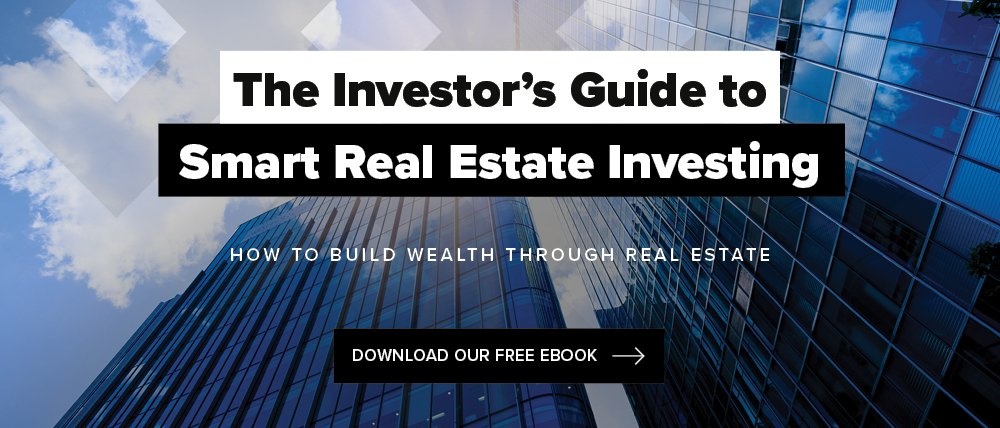The secret is out.
Zero income tax, low cost of living, top-notch schools, world-renowned nightlife, natural beauty, and much more have made Austin too good to resist. Austin, Texas has seen a population explosion over the last 10 years. 200,000 more people are calling the Texas capital home than there were just a decade ago. Young professionals are arriving by the tens of thousands each year, hot on the trail of the millions (yes, literally millions) of small businesses that are putting down roots in Texas, along with 49 Fortune 500 companies. Austin commercial real estate continues to present itself as a smart investment choice and the advantages are numerous, to say the least. Here are just a few that should whet the appetite of even the savviest investor.
Passive Income Potential
They say there’s no such thing as a free lunch. I disagree, especially when the restaurant making your lunch is paying you rent. It would be absurd to say that commercial real estate investment comes without risk, even in a market like Austin, but once you’ve acquired a good space and a good tenant takes residence in it, money begins to arrive in your account every month and it doesn’t stop until that tenant leaves.
Some tenants intent on keeping their property in line with their brand may even agree to a triple net lease, which places the responsibility of taxes, maintenance, and insurance on the tenant, leaving you with only your mortgage payment. Most good businesses also like to make sure they look the part, so they will typically make sure they keep the property in tip-top shape.
Commercial properties also carry much longer leases (3-5 years) than residential properties (12 months), especially in good markets, which means far less shopping for tenants.
To learn more about commercial real estate, Austin, connect with one of our specialists today!
Non-correlated Assets and Diversified Returns
Besides making you sound very hip at a cocktail party, non-correlated assets might be exactly what you need to balance your portfolio, especially if you are a little more risk-averse. A non-correlated asset is basically one that is not tied to the performance of others. A commercial real estate investment, for example, is not typically linked to the stock market, except of course in extreme cases.
The Modern Portfolio Theory, developed by Nobel Laureate Harry Markowitz, suggests reducing the overall risk and boosting returns by spreading your investment across non-correlated assets.
Inflation Protection
When investing in stocks or bonds, inflation can end up cutting into your returns since dividends tend to keep up with inflation levels. Commercial real estate can create something of an inflation hedge, offsetting the long-term impact since property rent can be adjusted right along with it.
ROI
While a single-family property might net a 1-4% return on investment, commercial properties can nab an average of 6-12%. In cold, hard numbers, a $300,000 single-family property might net you $12,000 in return, while a $300,000 commercial property has the potential to return $36,000 due to the ability to charge more per square foot.
Tax Benefits
The only sure thing is death and taxes, but commercial real estate investment may be able to help with at least one of those.
For example, income from most real estate investments are not considered business income, hence you have earned no income as a real estate investor as far as the IRS is concerned. And as long as you are “materially participating” in business operations you may be eligible to deduct up to $25,000 in losses.
The IRS also allows investors to claim depreciation over a period of 39 years on a commercial property. Essentially, you are able to deduct 1/39th the value of your investment property annually, whether you use funds on property upkeep or not.
“Long-term investments” also fall under long-term capital gains tax rules, which means your tax rate on income generated from your investment property is substantially lower than a short-term investment, such as a single-family home flip.
And when it’s time to move on from one property to the next, there’s also the ability to take advantage of a 1031 exchange. It allows an investor to defer tax liability as long as they use the income gained by the sale of their current property to acquire a new one. If none of the money ends up in your pocket, you are not liable to pay the taxes on it.
Is Commercial Real Estate Investment Right for You?
Only time will tell if Americans return to traditional commercial business as they once did before COVID-19 put a sound beating on our country’s economy, so any investment choice should be weighed with that in mind. But Austin’s strong population increases over long periods and the explosion of small and large businesses alike make commercial real estate in Austin a very attractive investment choice.




